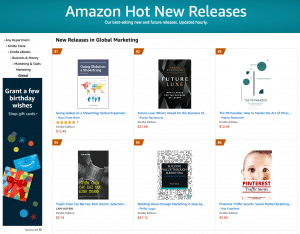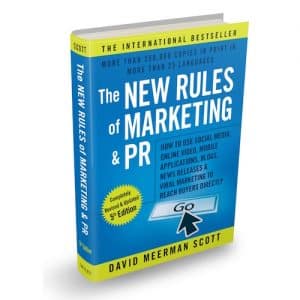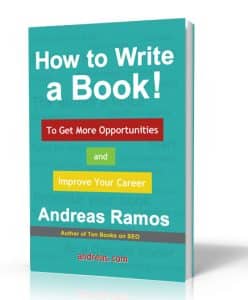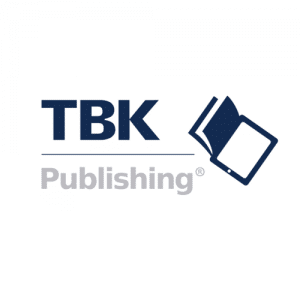This is the first article in a series that describes how I wrote several international bestsellers and what it has meant to my boutique consulting business. Feel free to be inspired to do the same if it fits with your business model, your ambitions, and you find the process exciting.
It must be a fun journey
Seeing your book rank first in one of Amazon’s categories is, of course, a great experience, but if you find the road that gets you there tiresome, forcing you to do things you do not like, then drop it.
Writing, publishing and marketing a bestseller as a one-man-band is a big job. There are many good reasons why even world-renowned authors continue to choose to leave a publisher in charge of most of the work.
But if you, like me, prefer to sit at the end of the table and be in control, then I will give you my recipe in this series of articles. I love writing, but I also love all the other activities required for the book to become known and eventually purchased. That’s why I enjoy the tasks and whistle every morning when I walk the few steps into my study or find a café and get started.
English non-fiction
Before you spend too much time reading on, I must emphasise that – so far – my bestsellers are English-language textbooks in the how-to genre. I do not think the method works for fiction, and there will be some non-fiction books where it is not applicable either. I also doubt whether it is suitable for a book that only targets a local language market, but I will return to that later.

My subject area is international business development in the software industry. It is a narrow market, but worldwide there are about 5 million potential readers. Precisely that limited but global market is a significant reason for the success.
I didn’t invent the wheel
I will admit that I did not invent the wheel. As with most innovative business models, mine also builds on top of many others and their ideas.
The first fundamental element of my success story comes from David Meerman Scott and his book The New Rules of Marketing and PR, which came out in the first edition in 2007. I read it while on summer vacation in Croatia and was hyper-excited about the possibilities that opened up. It got me completely re-evaluating the go-to-market approach for my consulting business and got me started blogging regularly. The result was a substantial increase in the number of unsolicited inquiries, and by the end of 2015, I had 5,000 followers on LinkedIn. At the time of writing, I have almost 32,000 followers, and more are coming every day. I will return to this in a later article about how to do that and for what it can be used.
I picked up the second essential element from Alan Weiss and his book The Consulting Bible (2011), which I bought and read in July 2013 (summer vacation once more!). Again, I revised my go-to-market approach as well as deciding that I should write a book. I pretty much knew what it was going to be about, but I did not have the recipe on how to get it written, published and marketed.
In the spring of 2014, I attended an Alexander Osterwalder Business Model Generation master class in London, which in turn contributed to a redesign of my consulting shop and provided input to my upcoming book.
After the master class in London, Sabanci University’s business management school in Istanbul, Turkey, invited me to deliver a series of international business development workshops for software industry executives. Preparing the workshop, I had large parts of the material ready for three books and only had to decide which book should come first.
The last but crucial essential element came from Andreas Ramos and his book How to Write a Book!: To Get More Opportunities and Improve Your Career, which came out in August 2014.
Now all the sub-elements were in place. It was just up to me to bring them to life.
Marketing for rookies
Knowing your target audience and the message they are receptive to are two of the most central variables in marketing. If you know who you are talking to and what challenges they face, you have come a long way towards the goal.
Based on my career and consulting business, it was logical to define the target group as everyone who works with revenue generation in software companies, especially those struggling with the international aspect. I was only interested in that part of the target group who were prepared to read a book in English.
However, revenue generation is a concept I use a lot, but the target audience does not. It covers all activities within business development, marketing, sales and customer support, including managing the relevant areas of responsibility. I, therefore, had to translate the term into the search criteria that LinkedIn offers in its Sales Navigator.
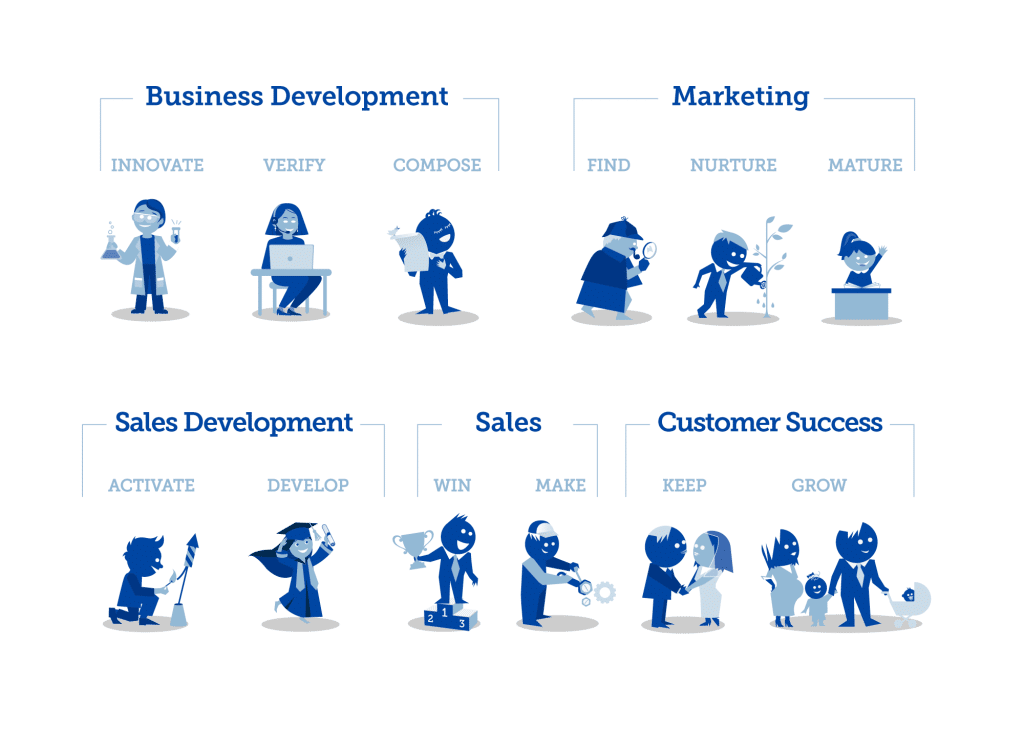
By searching among English-language profiles on LinkedIn, I found five million people who fit the criteria. I was well aware that only some of them were book readers, yet I judged that the target group was large enough to pull a sale of at least 10,000 copies.
Whether I was skilled enough to write and publish a book they wanted to buy and read was not yet clear, but I was convinced that there were enough potential readers.
In a later article, I will dig into the details on how to use LinkedIn Sales Navigator, which in my situation is a gift from heaven.
Choosing the subject
It may sound strange that I defined the target audience before choosing which topic I wanted to write about. But there was a good reason for that.
At that time, I primarily saw the book as a support vehicle for my consulting business, and here the target group was precisely what I describe above. I had a list of topics that I knew from my consulting activities that all companies constantly struggle with, so it was just a matter of choosing which one to deal with first. In addition to being a topic that the target audience recognised was a problem for them, my background and profile should also support that I had a particular insight so that readers would perceive me as a credible source.
The choice fell on the challenges of establishing and operating reseller channels. I will elaborate on that choice in a later article.
Choosing the publisher
Very early in the process, I had to decide how to publish the book.
In principle, there are three options:
- The traditional publisher
- Co-publishing
- Self-publishing
Let me emphasise that for readers – those who buy your books – it does not matter which publishing path you choose.
Suppose you are dependent on book reviews in the traditional media such as newspapers, magazines, TV, radio and the like. In that case, it is probably an advantage to be published by an established publishing house. There are far more books published than the commercial book reviewers can find time to review, which is why they often choose to concentrate on those that come from the largest publishers. That’s why you often see reviews of books that the reviewer does not like. Books that the rest of us would have put half-finished aside, but which the reviewer still spends energy on finishing reading and giving a bad review.
Like me, if you are not dependent on that type of review, you have a free choice.
The traditional publishing house
In the traditional publishing model, the author transfers the rights to his work to a publisher, who is then responsible for all the practicalities of having the book produced, marketed and distributed.
The publisher provides editorial resources, proofreading, setup, cover design, marketing, production and distribution.
Roughly speaking, publishers and authors share the turnover in the ratio 85:15. Still, in the individual situation, the financial conditions can vary considerably depending on how well-known the author is and how much potential the publisher believes the book has. The author can both get more and less than 15%.
I have never published a book through a traditional publisher. Here are the reasons that immediately led me to opt-out of that model.
- I could finance the publication myself and therefore did not need that service from a publisher.
- My research suggested that I would have to spend a lot of time finding a publisher who would connect with a debutant. Was I ready for that? Did I want to spend time and energy chasing publishers? Couldn’t I spend that time better on the book?
- Many authors I spoke to were disappointed with the support they received from their publishers. It seemed as if the publishers were throwing spaghetti on the wall and then waiting to see if anything stuck. If your book did not get off to a good start, it was quickly forgotten by the publisher.
- I could figure out that a publisher had to spend considerable resources reviewing papers and manuscripts that they chose not to publish. These costs were to be covered by the authors whose books they decided to publish. As a writer, I needed just one publisher who said yes to my book. The costs that publishers have to say no thanks to a thousand others have no value to me.
Note. When I prepared my fourth book, I approached two publishers and got rejections from both. Then I decided to stop the search and publish the book myself. I will describe that experience in a later article.
Co-publishing
The traditional publishers are often mistaken, which means that many of the books they publish do not reach the sales figures they hoped. This makes publishers extremely cautious. If you are a debutant and unknown, it is pretty tricky to get your book published by an established publishing house.
Against this background, publishing houses have sprung up where the authors co-finance the publication. Of course, this type of publisher is easier to approach simply because their commercial risk on the individual publication is limited.
But co-publishers have a tarnished reputation among both reviewers and authors.
In principle, there is nothing wrong with an author co-financing the publication of her work. However, if the co-publisher primarily lives on the authors’ contributions and not on the subsequent book sales, then a conflict of interest arises.
I have not published books through co-publishers but recognise that it can be a good solution for debutants and bestsellers. However, effort must be made to have clear agreements where the conflicts of interest can be managed.
Self-publishing
From the beginning, I chose to publish my books myself.
TBK Publishing is a division of my consulting company, TBK Consult ApS.
It was Andreas Ramos who inspired me to take this path.
TBK Publishing is a publisher like any other. We have a company registration number, our own ISBN series, and we have the same resources as all other publishers with two important exceptions:
- We do not spend energy or money on evaluating external project proposals. We only publish my books. (Update: I am preparing the publication of a book where I am the editor and not the author).
- All competencies are engaged on a freelance basis. We have very low fixed costs.
What that entails is the topic of the next article in this series.
To be continued….
